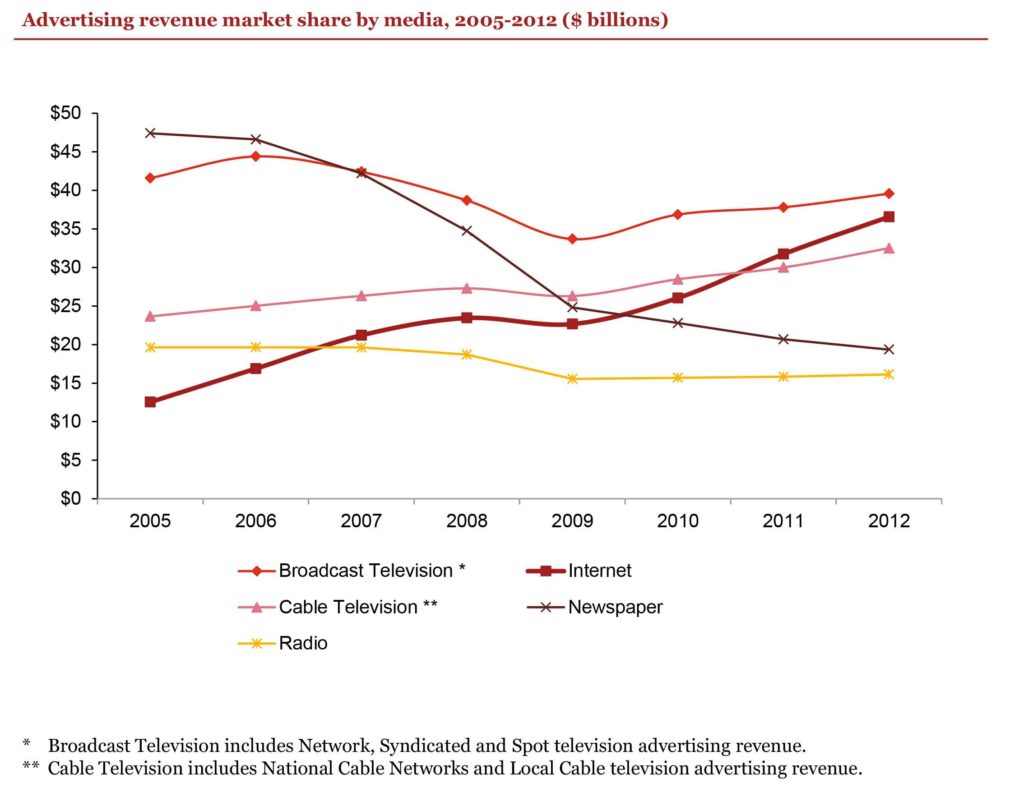In Q4 of 2012, advertisers spent a record $10.3 billion on digital advertising, an impressive 15% increase over the same period in 2011. While the idea that online and mobile advertising revenues are growing is hardly news, the rate of growth is pretty impressive.
The IAB (Interactive Advertising Bureau) recently released its updated Interactive Advertising Revenue Report. As we review the results of the past few years, we can see that even the Great Recession couldn’t stop the momentum. After a short pause for breath in 2009, the trend line continued its climb at an even sharper angle. And in 2012, Internet advertising reached a record $36.6 billion for the year.

With the proliferation of tablets and faster 4G/LTE speed on smartphones (not to mention improved screen resolution on both devices), the future for online advertisers looks even more bullish.
So with this tremendous growth in digital, surely the much-discussed battle between digital and TV for advertising dollars must be shifting and the decline of TV advertising finally at hand. Surely.
And yet, no. The juggernaut of television advertising just keeps lumbering on. In fact, cable television reached new record revenues of $32.5 billion in 2012, pushing the combined cable and broadcast TV revenues to a total of $72.1 billion.

Digital media will certainly continue to grow at a double-digit rate, but there are a couple of reasons why advertisers will continue to put many of their dollars into television advertising for several years to come.
1. THE POWER OF STORYTELLING
The TV medium excels at storytelling – and as humans, we are hardwired to prefer our information in the form of story. Despite the improvements in online ad capabilities, the vast majority of online ads are display or search ads, sold in the form of impressions and clicks. An impression can’t do what a story can do. Impressions can remind, reinforce and catch the eye. They can’t tell a persuasive story or touch emotions.
2. THE TREND TO MULTIPLE SCREENS
So far, online content is not replacing television content – it’s joining it. Watching a TV screen, while engaging with friends on a laptop or tablet, and answering the occasional text is the new normal for evening entertainment. Even with our options for time-shifted viewing, the majority of us still like to catch that must-see show at the must-see time, because the online conversation about the show is becoming part of the event. We can watch and comment in real time with our digital communities, enhancing and extending the experience.
Our viewers are engaging with content more heavily than ever, and they are doing so through whatever device or medium works best for the task. As advertisers, we need to do the same – finding our viewers across their multiple screens and using each medium for its best role in engaging, reminding and persuading.
As for the battle between digital and TV, we might find it was never a battle at all.
Wynn Saggus, VP/Group Account Director at The Ramey Agency



